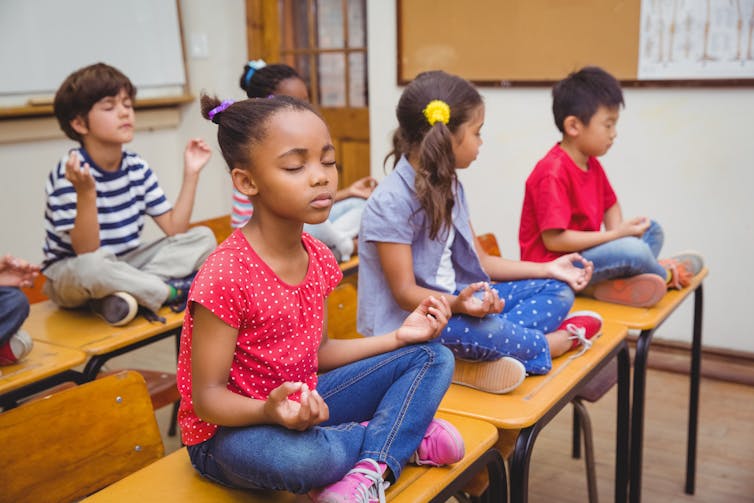The fast pace of the business world — where competition is the rule and return on investment decides everything — can be challenging for business students.
They are expected to know the rules of business inside out but they also need to learn to master their emotions, to enable efficient and ethical decision making.
A traditional business education provides few opportunities for students to cultivate emotional resilience, empathy and ethical decision-making. Incorporating meditation into the curriculum could be a contribution to rectifying this.
Preliminary findings from a study conducted with business students at Simon Fraser University show that even 10 minutes of classroom meditation can gradually increase students’ levels of physical, mental and emotional awareness.
Can meditation help all students — from elementary to university — to become more peaceful, calm and better decision makers?
Positivity, creativity, connection
Our study, conducted with 93 students of a third year Business Ethics course in 2016, revealed that students who meditated in the classroom experienced a transformation in their thinking and behaviour.
Initially, these students found it challenging to control their “monkey minds” during a 10 minute meditation.
Interestingly, with practice over three months duration, 10 minutes became short for them, and they felt motivated to practice more at home.
For most of the students, meditation was a first time experience, and gradually they began to feel calmness and equanimity. Meditation allowed them to know themselves better, helping them feel more relaxed and peaceful. It seemed to increase students’ level of physical, mental and emotional awareness.
Moreover, students also reported waking dreams, visions and a sense of tranquility during meditation.
Most of the interviewed students said that they enjoyed meditation, and felt happy that they could attend the course.
Improving children’s wellbeing
Meditation is not just for adults. Children and adolescents also benefit. Research shows that meditation in the classroom helps students become more focused, calm, quiet, settled and rested — by providing them an opportunity to learn to relax and reflect.

Researchers from the Universities of Udine and Rome in Italy, studied the effects of a mindfulness meditation training on a group of 16 healthy elementary school children aged seven to eight years old.
They found that meditation training improved children’s attention and reduced internalizing problems, such as fearfulness, withdrawal from social groups, anxiety and depression, improving their psychological well-being.
Ten to 12 minutes of meditation also enhances positivity and creativity among students — by reducing restlessness, nervousness and irritation — according to research from Erasmus University’s Rotterdam School of Management.
More importantly 10 minutes of meditation daily can enable us to connect with ourselves, get acquainted with our innermost feelings and have better plans for future.
Changes in the brain
At the physiological level, research shows that meditation can reduce stress, pain, anxiety, cardiovascular diseases and insomnia.
Meditation also balances blood pressure and heart rate, improves respiration and cognition.
Neuroscience findings also suggest that brain can be changed structurally and functionally through regular practice of meditation — resulting in improved emotional and mental states.
We also spoke informally with Dr. Deepak Chopra, alternative medicine advocate, public speaker and writer, during a conference in Tuscon, Arizona, in 2016. He unveiled regular meditation as the most important factor behind his charismatic personality and high level of energy, in the context of his extremely busy and socially-committed life.
Furthermore, there is ample research to show that the largest effects of meditation are experienced by those areas of brain which are responsible for happiness and positive feelings.
A question of commitment
The above discussion provides a glimpse of the potential of a meditation practice for students of all ages.
A meditation practice does not require any sophisticated equipment, infrastructure, support system or money. It requires only commitment — to dedicate at least 10 minutes everyday. And a small space to sit or stand comfortably.
Meditation as a part of regular teaching can play an important role not only in enabling students to increase their self-awareness, but also in changing their perspective to some extent.
We think it is time for schools at all levels to acknowledge meditation practices as an important part of any curriculum — for the benefits of students and society as well.
Thomas Culham, Visiting Lecturer, Beedie School of Business, Simon Fraser University, Simon Fraser University and Neha Shivhare, Assistant Professor, Dayalbagh Educational Institute, India; Fellow, Simon Fraser University
This article was originally published on The Conversation. Read the original article.
![]()

